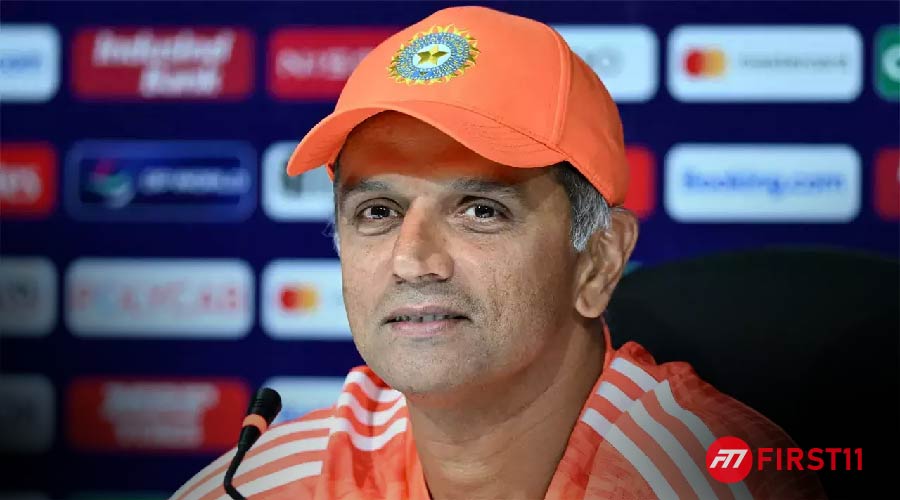Rahul Dravid, often referred to as “The Wall,” is a legendary figure in Indian cricket, known for his exceptional batting skills, unwavering resilience, and profound impact both as a player and a coach. This article delves into the illustrious career of Rahul Dravid, exploring his journey as a player, his contributions as a coach, and glimpses into his personal life.
Early Life and Entry into Cricket: Born on January 11, 1973, in Indore, Madhya Pradesh, Rahul Sharad Dravid developed a keen interest in cricket from a young age. His father, Sharad Dravid, worked for Kissan, and his mother, Pushpa, was a professor of architecture. Dravid’s journey into cricket started when he joined the Karnataka State Cricket Association (KSCA) academy in Bangalore, where he honed his skills under the guidance of his coach Keki Tarapore.
Playing Career
Rahul Dravid made his international debut for India in 1996 against England at Lord’s. His early performances showcased his technical prowess and impeccable technique, earning him a permanent spot in the Indian team. Dravid, along with Sourav Ganguly, Sachin Tendulkar, Virender Sehwag, and VVS Laxman, formed the backbone of the Indian batting lineup during the late 1990s and early 2000s.
Test Cricket
Dravid’s impact in Test cricket was monumental. Known for his resolute defense and ability to play long innings, he earned the moniker “The Wall.” His highest individual score of 270 against Pakistan in 2003 remains etched in cricketing history. Dravid’s consistency and resilience in the longest format of the game contributed significantly to India’s success on the global stage.
One Day Internationals (ODIs):
While Test cricket was his forte, Dravid also excelled in ODIs, accumulating over 10,000 runs. His ability to anchor the innings and provide stability in the middle order made him a crucial asset for the Indian team. His partnership with Sourav Ganguly at the top of the order became the cornerstone of India’s batting lineup.
Captaincy:
Rahul Dravid took on the captaincy role for the Indian cricket team from 2003 to 2007. Despite facing challenges, including a historic series win in England in 2007, his leadership was characterized by resilience and a focus on building a competitive team.
Post-Retirement Contributions
After retiring from international cricket in 2012, Rahul Dravid didn’t sever his ties with the game. He transitioned into coaching, bringing his wealth of experience and cricketing acumen to the younger generation. Dravid served as the coach of the India A and India Under-19 teams, playing a crucial role in nurturing emerging talent.
Under his guidance, the India U-19 team achieved unprecedented success, winning the ICC U-19 Cricket World Cup in 2018. Dravid’s coaching philosophy emphasized skill development, mental resilience, and instilling a strong sense of discipline among young players.
National Cricket Academy (NCA) Role:
In 2019, Rahul Dravid assumed the role of Director of Cricket Operations at the National Cricket Academy (NCA) in Bengaluru. His responsibilities included overseeing the development of young cricketers, coordinating coaching programs, and ensuring a seamless transition from the junior to the senior level.
Personal Life
Rahul Dravid is known for his calm and composed demeanor both on and off the field. He married Vijeta Pendharkar in 2003, and the couple has two children. Dravid’s private life has been kept away from the media glare, reflecting his preference for a low-key existence.
Beyond cricket, Dravid is known for his intellectual pursuits. He holds a degree in commerce from St. Joseph’s College, Bangalore. His articulate speeches and insightful analyses as a commentator further exemplify the depth of his understanding of the game.
Legacy and Impact
Rahul Dravid’s impact on Indian cricket extends beyond his individual records. His commitment to the sport, work ethic, and values have left an indelible mark. As a player, he inspired a generation of cricketers with his technical finesse, while as a coach, he continues to shape the future of Indian cricket by mentoring and nurturing young talents.
Dravid’s influence is not confined to the cricket field; he is regarded as one of the gentlemen of the game, embodying the spirit of fair play and sportsmanship. His legacy as “The Wall” serves as a symbol of perseverance and dedication for aspiring cricketers worldwide.
In the tapestry of Indian cricket, Rahul Dravid’s story is woven with threads of resilience, commitment, and excellence. From anchoring the team in challenging conditions to grooming the stars of tomorrow, Dravid’s journey represents a seamless transition from a prolific player to an influential mentor. As he continues to contribute to the development of Indian cricket, his legacy remains eternally engraved in the annals of the sport. Rahul Dravid, “The Wall,” stands tall, not just as a cricketer but as a symbol of unwavering determination and the embodiment of the true spirit of the game.
















